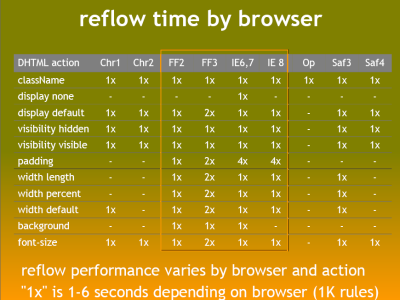TIL Triggering Reflow
POSTED ON:
Have you ever been reading an article online when something suddenly changes on the page? Without warning, the text moves, and you've lost your place. Or even worse: you're about to tap a link or a button, but in the instant before your finger lands—BOOM—the link moves, and you end up clicking something else! Via Google's CLS description
Google ranks that metric and calls it the Cumulative Layout Shift, within it's Core Web Vitals.
It happens when you trigger a reflow on the page.
For example:
-
Causes reflow: Changing absolute positioning
-
Does not cause reflow: Changing transform or opacity
Why? Because changing absolute positioning properties uses the CPU, while transform causes the browser to create a GPU layer for the element.
Translate(), the element still occupies its original space (sort of like position: relative), unlike in changing the absolute positioning. And overall, Translate() is more efficient and will result in shorter paint times for smoother animations.
@Paulirish created a list of all the JS elements that trigger reflow:
https://gist.github.com/paulirish/5d52fb081b3570c81e3a

And you can find more information about it here as well:
https://developers.google.com/speed/docs/insights/browser-reflow
Related TILs
Tagged: seo